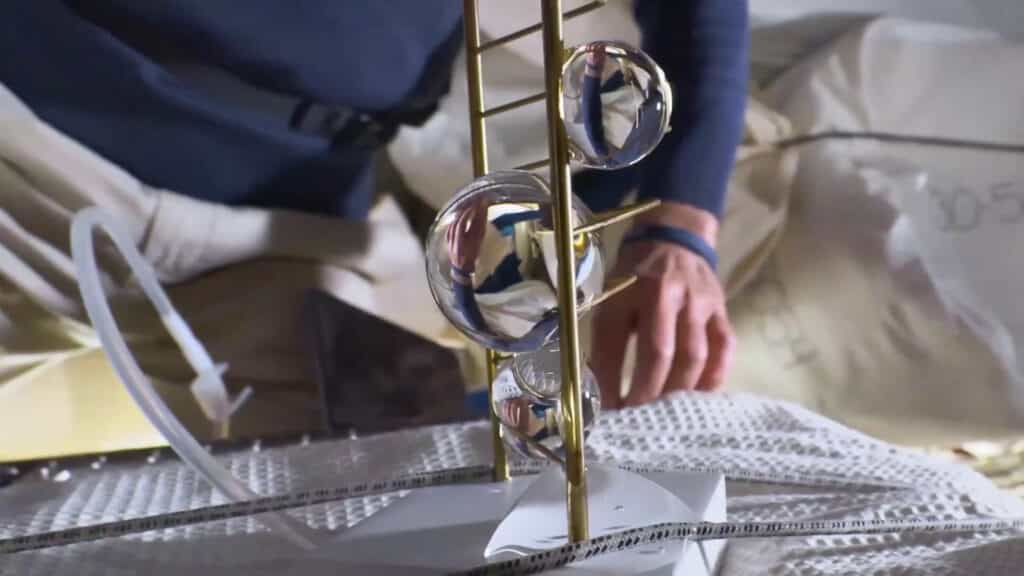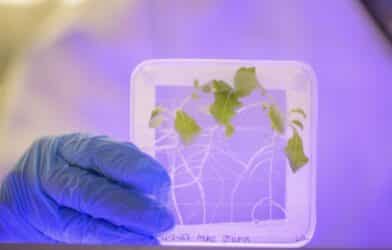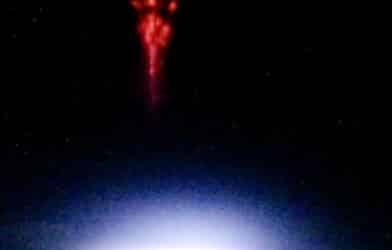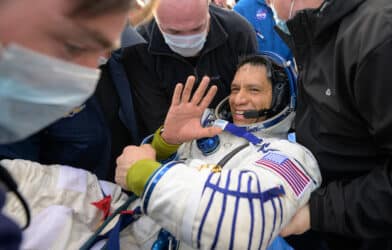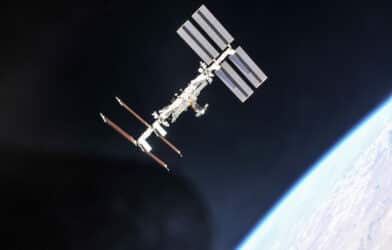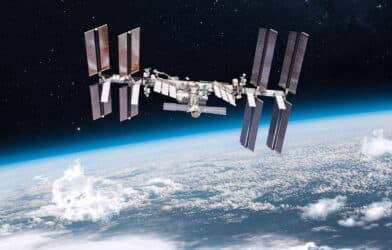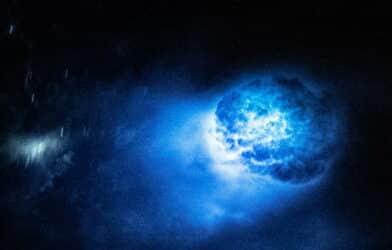An artwork that can only exist in outer space has been created on the first ever private mission to the International Space Station. Dubbed the “Impossible Object,” it was devised by a doctor of physics working with an artist.
The sculpture was taken to space by astronaut Eytan Stibbe as part of the Rakia art mission, which aimed to bring art and humanity into space. It’s made of liquid water and cannot exist on Earth due to gravity.
Built from brass rods and tubes, it looks like a staircase with nowhere to go. Water flows through the sculpture, but without any gravity to direct it downward, it sticks to the ladder’s metallic structure and makes bubbles of varying sizes. On Earth, the water would simply dribble out.
“Our joint work is a sculpture that can’t exist on Earth, only in space,” says co-creator, artist Liat Segal, in a YouTube video (see bottom of post). “It is made of a metallic structure that pushes liquid through it, surrounds it and creates a three dimensional structure made of liquid water.”
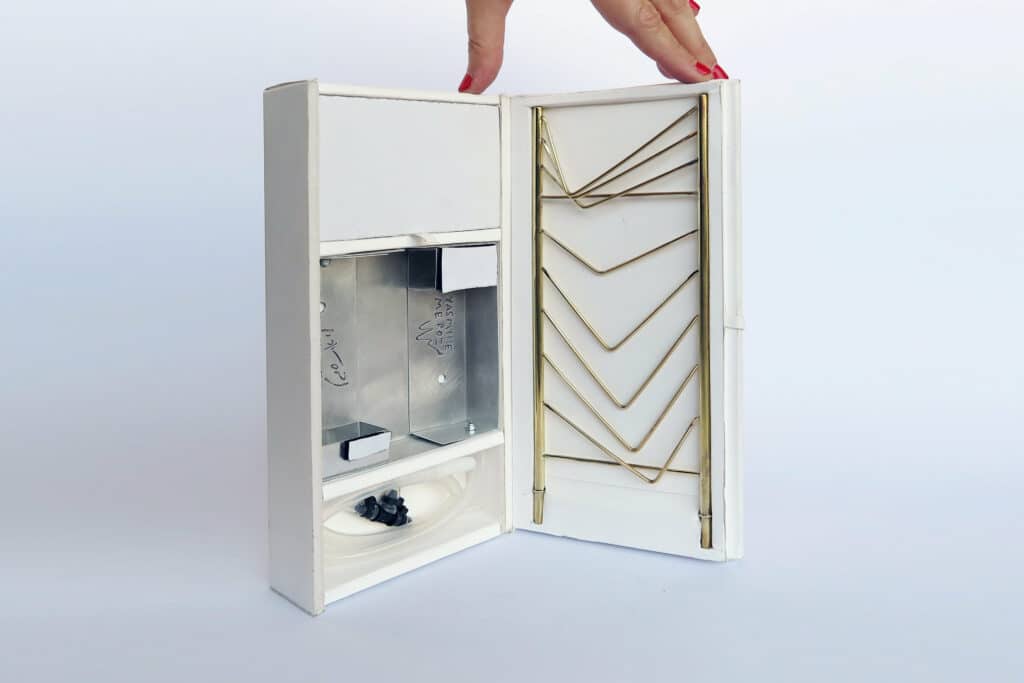
Its creators say the structure “questions shape and form” because, without gravity, the shape of waves and water must change.
The way it works has even surprised its creators, who thought the water may wrap itself around the structure. They also speculated that the water’s shape would be wavy just like the structure. However, the water formed a few large spheres which gently attached themselves to the sculpture.
The shape and the way they moved were affected by the structure beneath. Its creators claim that because space tourism is on the cusp of becoming viable, their art makes us reflect on “the place of culture and art in our lives, on Earth and beyond.”
They also say their work makes us accept a certain loss of control and taps into our passion for unveiling the unknown.
“On Earth the water would simply slip to the ground but in space the water covers the structure, creating a shape that can’t be predicted,” Segal continues. “It doesn’t have any up and down because that is the way it is in space. This work made us think about the shape of water. What does a piece of water look like? How do you hold a piece of wave in your hand?”
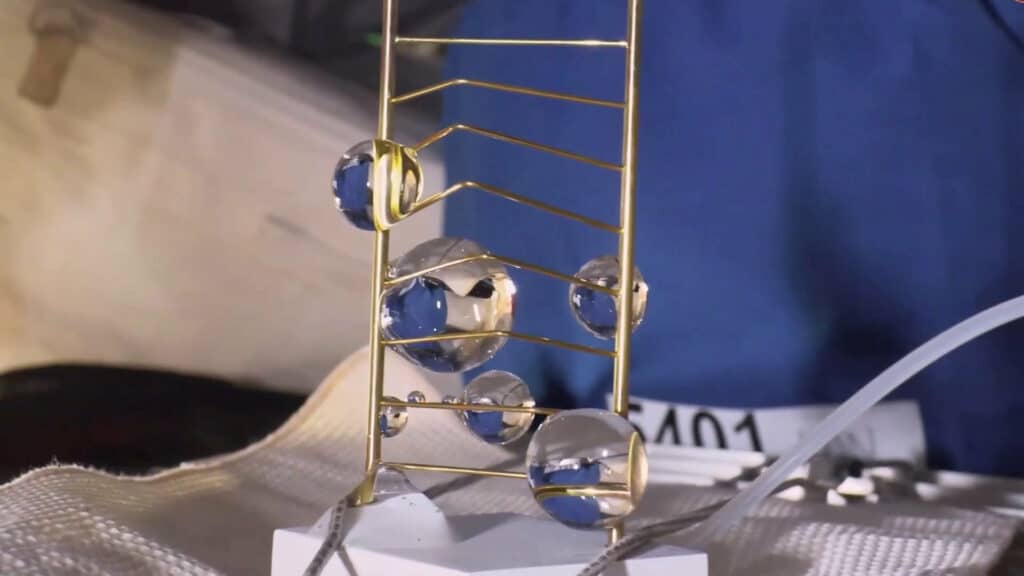
Segal says the team knew there would only be one opportunity to have The Impossible Object work as planned. After all, this would be its only chance to be taken into space on board the first private mission to the International Space Station. There, station astronaut Eytan Stibbe had to unfold it, rebuild it and activate it.
“I think that one of the really cool things about this project is that the medium here is basically the physics of water,” adds co-creator Dr. Yasmine Meroz, a physicist at Tel Aviv University, in the video. “When we wanted to try and plan and develop our sculpture, we really had to understand what are the underlying forces. We tried to get an intuition for these things through various demonstrations on the International Space Station and try to understand what we would expect. Once in a while it was odd because we kind of stepped back and wow, we are trying to imagine how this is going to look in space.
“When I saw it for the first time I had tears in my eyes because I was so excited from the opportunity that we had,” she adds. “I couldn’t believe that something that we made was aboard the space station. It was just mind blowing. The results, I think, were spectacular. Part of what was so spectacular about it was that it wasn’t what we expected, and it was beautiful.”
Segal and Meroz first met when they were studying for their masters degrees at Tel Aviv University, but their paths diverged when Dr. Meroz decided to become a physicist and Segal pursued fine art.
Years later they were reunited when the University’s Genia Schreiber University Art Gallery commissioned their first joint artwork “Tropism.”
Today they are fierce advocates of collaboration between artists and scientists, which they see as “fairy dust” that sparks ideas in both fields.
Report by Dean Murray, South West News Service
